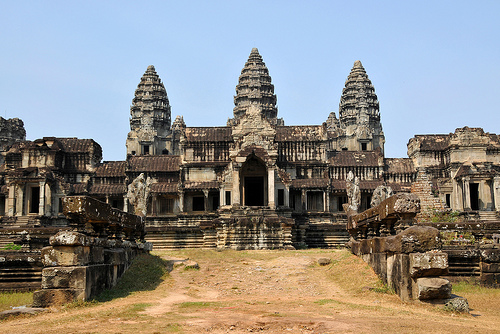Angkor Wat is a list-worthy wonder.
- Angkor Wat is an extensive building and religious temple located in the Angkor region in Cambodia, in Southeast Asia.
- Angkor Wat is said to be the largest temple in the world, and it sits on an area of 820,000 square metres (980,712 square yards).
- The name ‘Angkor Wat’ comes from the native Cambodian Khmer words ‘angkor’ and ‘wat’, meaning ‘city’ and ‘temple grounds’ respectively.
- Angkor Wat is a prominent symbol of Cambodia, and it appears on the country’s national flag, making it only one of two nations in the world to have a building exist on their flag.
- The primary part of Angkor Wat was built around the early to mid 1100s by the native Khmers, under orders from ruler Suryavarman II, as a state temple for the king.
Angkor Wat
Image courtesy of Dennis Jarvis/Flickr
- Angkor Wat contains large quantities of bas-relief; is rich in Khmer architecture styles; and is made primarily of sandstone and laterite; and the temple features a moat, an outer area and the central area, which consists of various sections.
- Originally, Angkor Wat was used as a temple for the Hindu religion, but it was adopted by the Theravāda Buddhists from the late 1200s.
- The UNESCO World Heritage Convention declared Angkor Wat a World Heritage Site as part of the Angkor Archaeological Park in 1992.
- The temple of Angkor Wat was once part of the capital city originally located there, and over the years, it has undergone various conservation and restoration works, by various groups from around the globe.
- Angkor Wat is a prominent tourist site, being one of the most popular sites in the country, although the large number of visitors to the site has significantly impacted some local areas nearby.
Bibliography:
Angkor, 2015, UNESCO World Heritage Convention, http://whc.unesco.org/en/list/668
Angkor Wat, 2015, Wikipedia, http://en.wikipedia.org/wiki/Angkor_Wat








